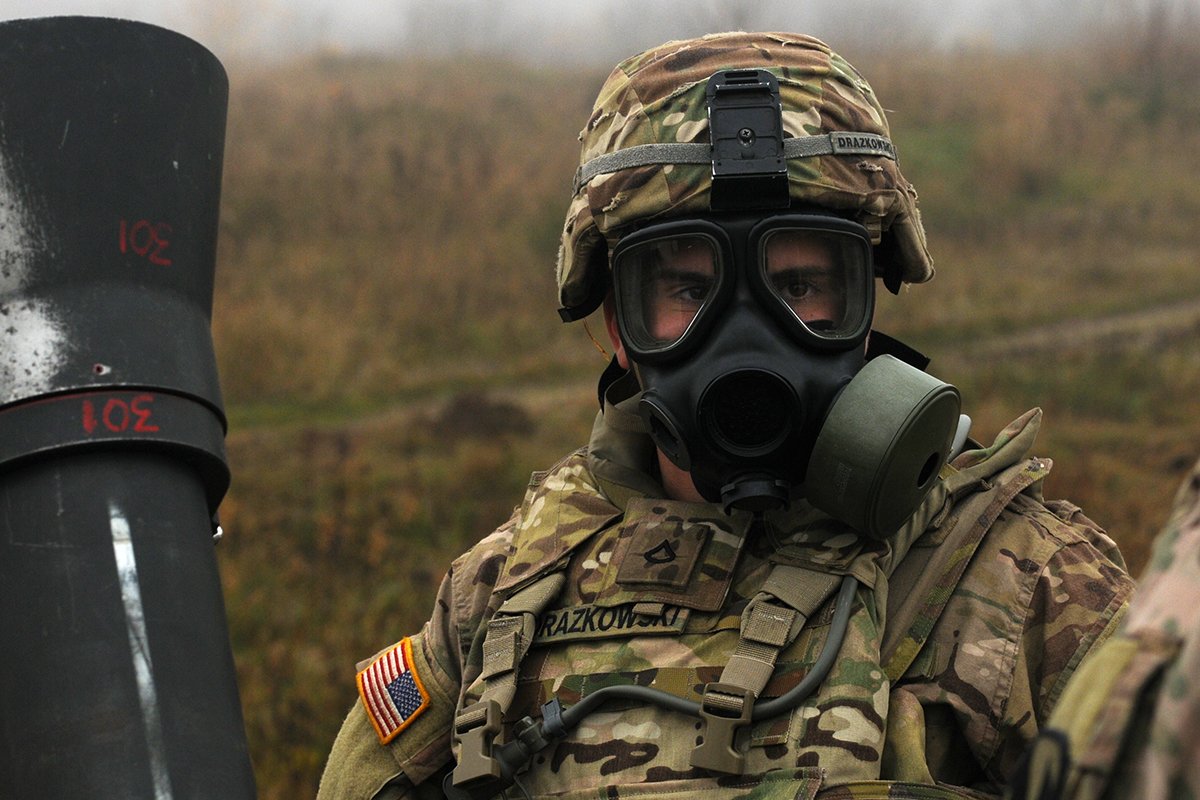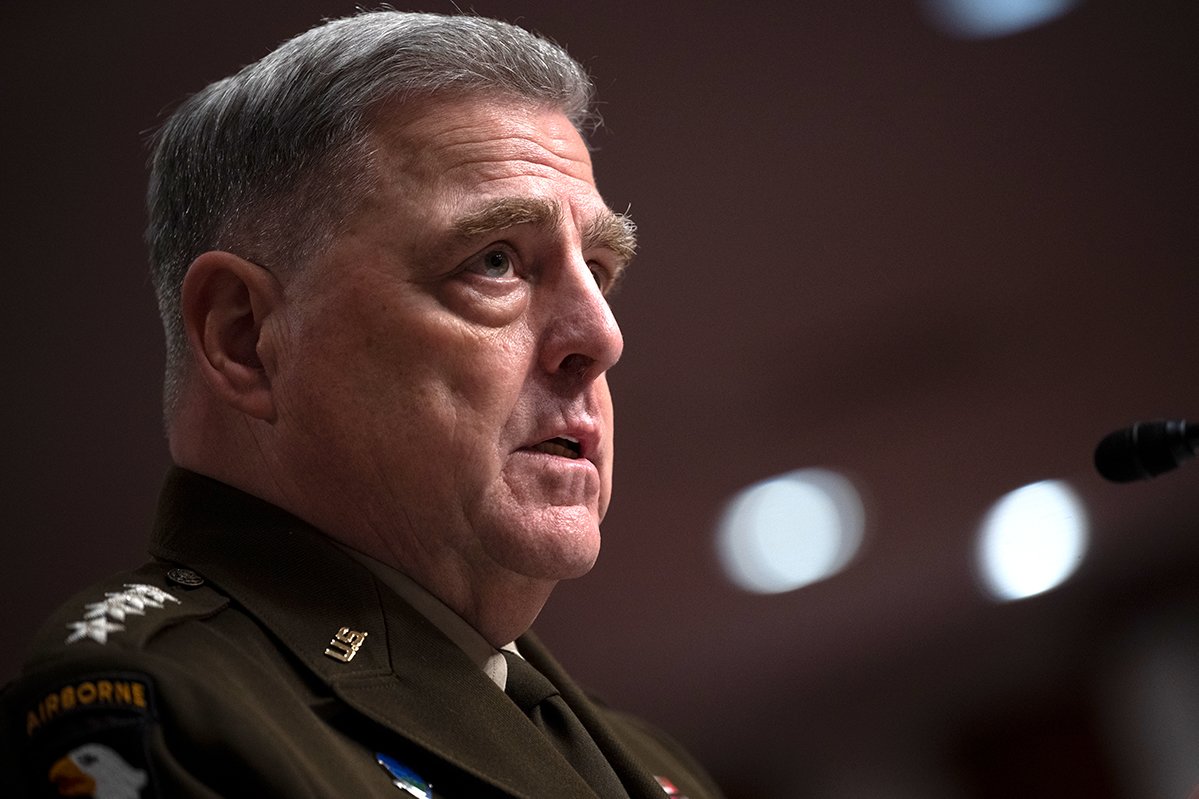More Troops Could Head to Eastern Europe as Top Defense Officials Expect Ukraine Conflict To Last ‘Years’

A US service member prepares to fire mortars during a nuclear, biological, and chemical exercise in Poland. US Army photo by Spc. Audrey Ann Hayes.
The United States should consider building more permanent bases in Eastern Europe following Russia’s invasion of Ukraine and rotate troops through the new posts, the nation’s highest-ranking military officer told lawmakers Tuesday, April 5.
Chairman of the Joint Chiefs of Staff Gen. Mark Milley and Defense Secretary Lloyd Austin were testifying before the House Armed Services Committee on the proposed 2023 defense budget, but much of the hearing focused on the Russian invasion of Ukraine and what the US could do to aid Ukraine and protect NATO allies.
“I think actual presence is always a good deterrent,” Milley said.
In Milley’s proposed scenario, troops would cycle through the bases so allied countries would “get the effect of permanent presence of forces,” without requiring individual soldiers to be permanently stationed for years at a time. Rotational forces would also save the Defense Department the cost of family moves, housing, schools, and other expenses, Milley said.
Milley suggested the bases could be funded by other countries, including Poland, Romania, and the Baltic states. Estonia, Latvia, and Lithuania were once part of the Soviet Union, declaring their independence in the early 1990s. The nations have long worried about Russian aggression and called for reinforcements.
“A lot of our allies […] are very, very willing to establish permanent bases,” Milley said. “They’ll build them, they’ll pay for them.”

Around 100,000 American service members are currently deployed across Europe, mainly in Germany, Poland, Italy, and the United Kingdom, according to Axios. That’s the most US troops deployed to Europe since 2005, but still well below historical peaks in 1957, when more than 450,000 Americans were deployed to Europe in the first Cold War buildup.
US and European defense leaders are likely to discuss the prospect of permanent bases — and possibly announce a decision — during a June NATO summit, Austin said.
During the hearing, lawmakers also asked whether Moscow’s demands that the US and NATO remove troops and arms from the nations bordering Russia signaled that the current conflict was larger than Russia and Ukraine.
“I do think this is a very protracted conflict, and I think it’s at least measured in years,” Milley said. “I think that NATO, the United States, Ukraine, and all of the allies and partners that are supporting Ukraine are going to be involved in this for quite some time.”
On Monday, a senior US defense official said some Russian forces appeared to be moving away from Kyiv and Chernihiv and repositioning themselves in Belarus. The Pentagon believes those units will be refitted, resupplied, and potentially reinforced with additional manpower before being sent back into Ukraine, likely to the Donbas region.
Austin said Tuesday that the US continued to provide anti-aircraft and anti-armor weapons to Ukrainian forces. The Pentagon is working to send both Switchblade 300 and 600 drones to Ukraine as quickly as possible, he said.
Read Next:

Hannah Ray Lambert is a former staff writer for Coffee or Die who previously covered everything from murder trials to high school trap shooting teams. She spent several months getting tear gassed during the 2020-2021 civil unrest in Portland, Oregon. When she’s not working, Hannah enjoys hiking, reading, and talking about authors and books on her podcast Between Lewis and Lovecraft.
BRCC and Bad Moon Print Press team up for an exclusive, limited-edition T-shirt design!
BRCC partners with Team Room Design for an exclusive T-shirt release!
Thirty Seconds Out has partnered with BRCC for an exclusive shirt design invoking the God of Winter.
Lucas O'Hara of Grizzly Forge has teamed up with BRCC for a badass, exclusive Shirt Club T-shirt design featuring his most popular knife and tiomahawk.
Coffee or Die sits down with one of the graphic designers behind Black Rifle Coffee's signature look and vibe.
Biden will award the Medal of Honor to a Vietnam War Army helicopter pilot who risked his life to save a reconnaissance team from almost certain death.
Ever wonder how much Jack Mandaville would f*ck sh*t up if he went back in time? The American Revolution didn't even see him coming.
A nearly 200-year-old West Point time capsule that at first appeared to yield little more than dust contains hidden treasure, the US Military Academy said.












